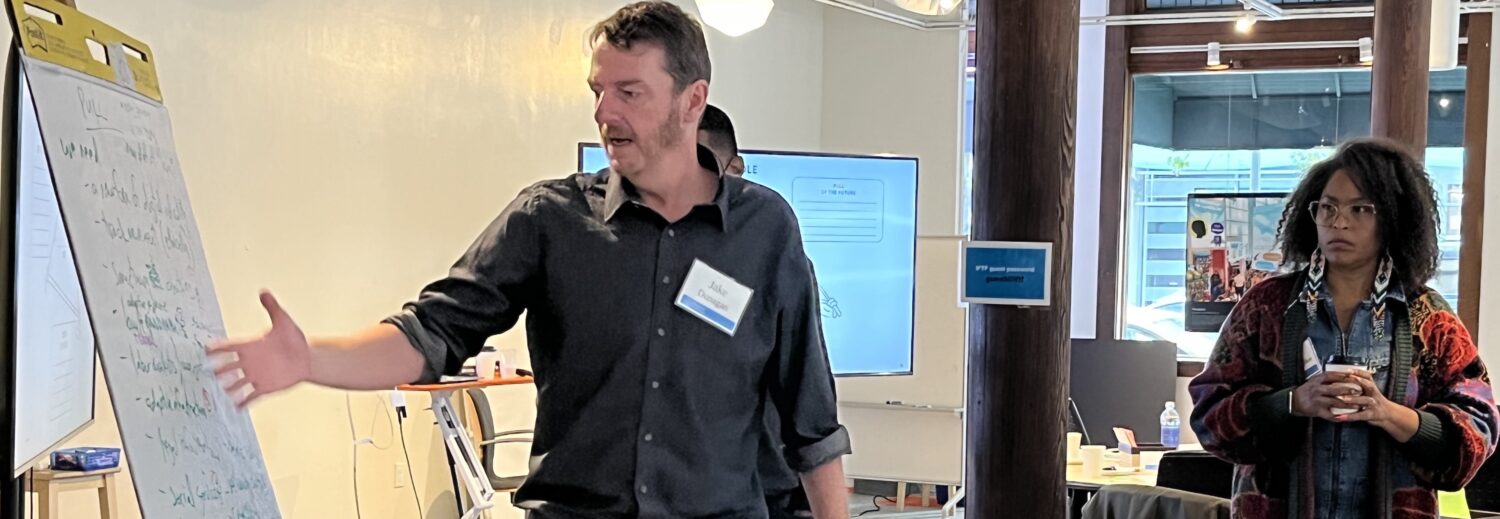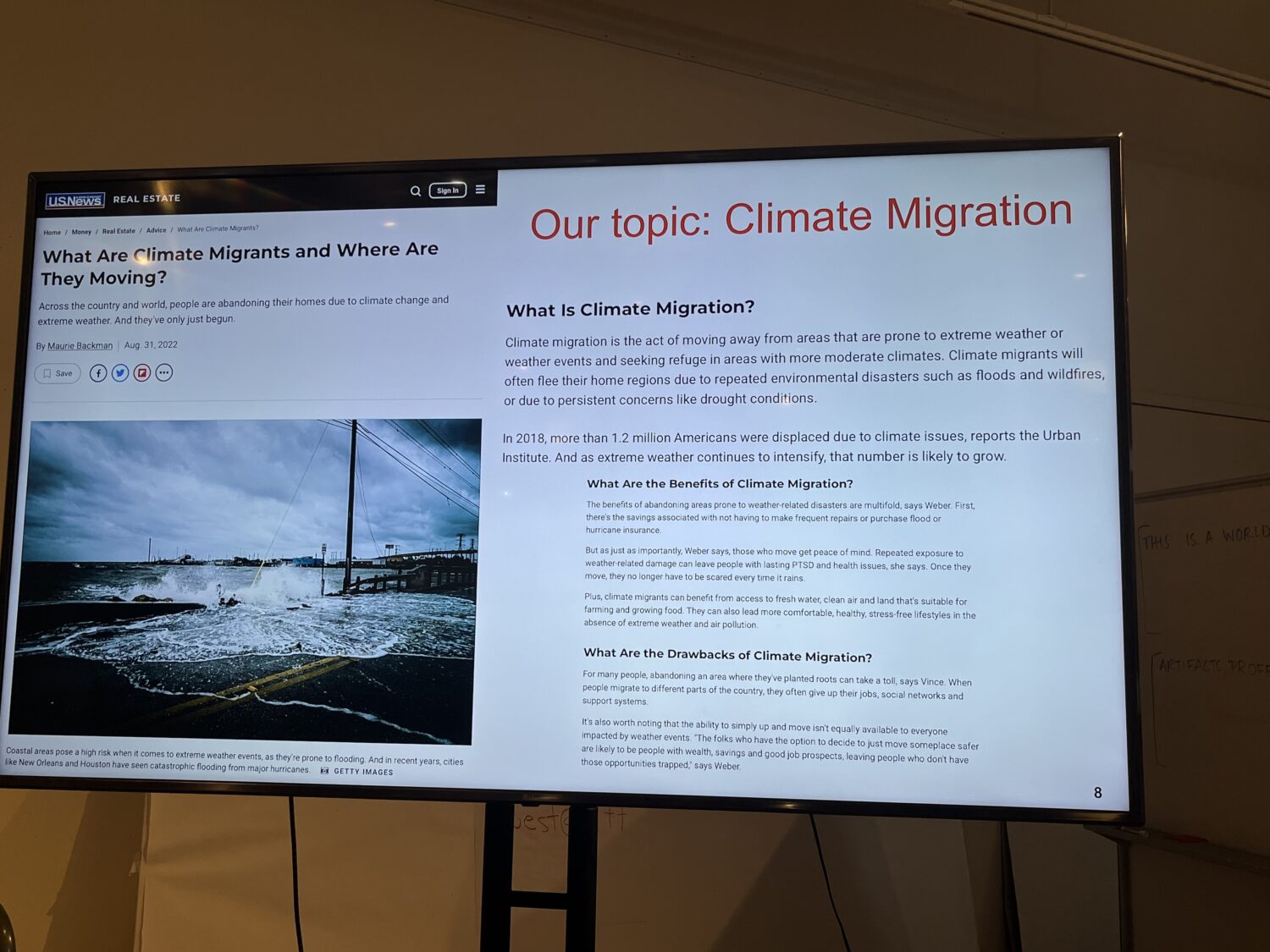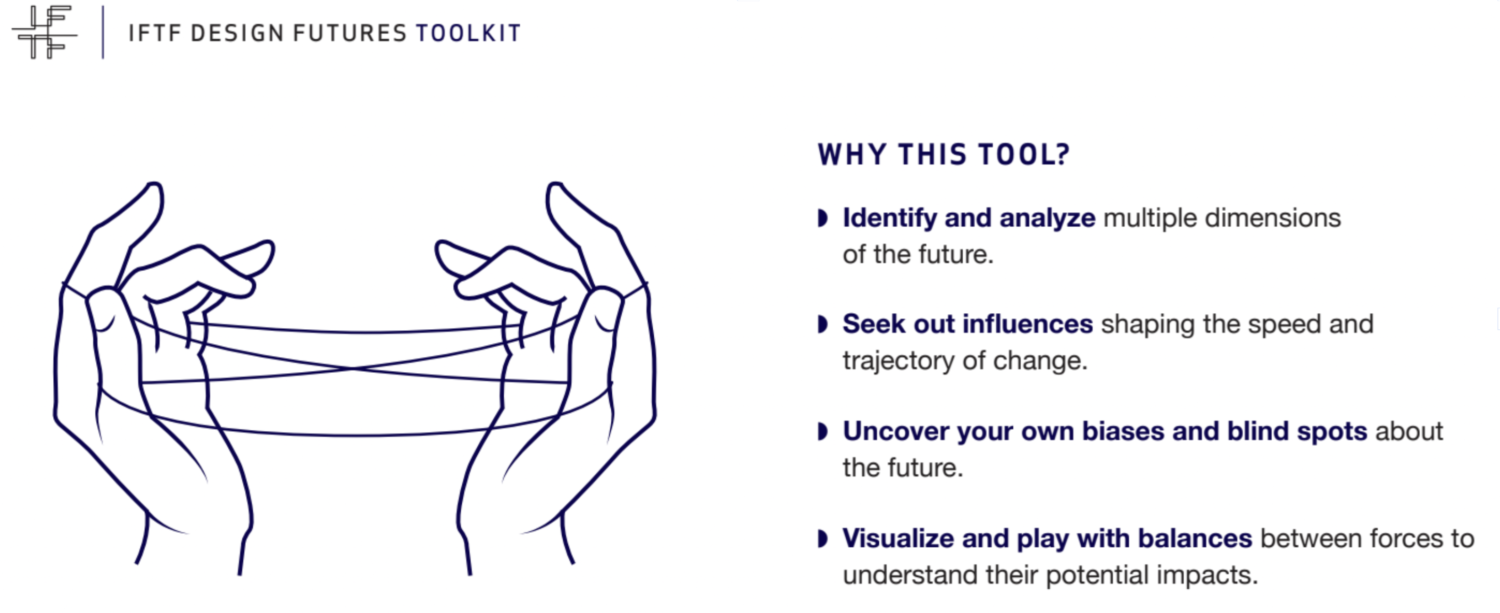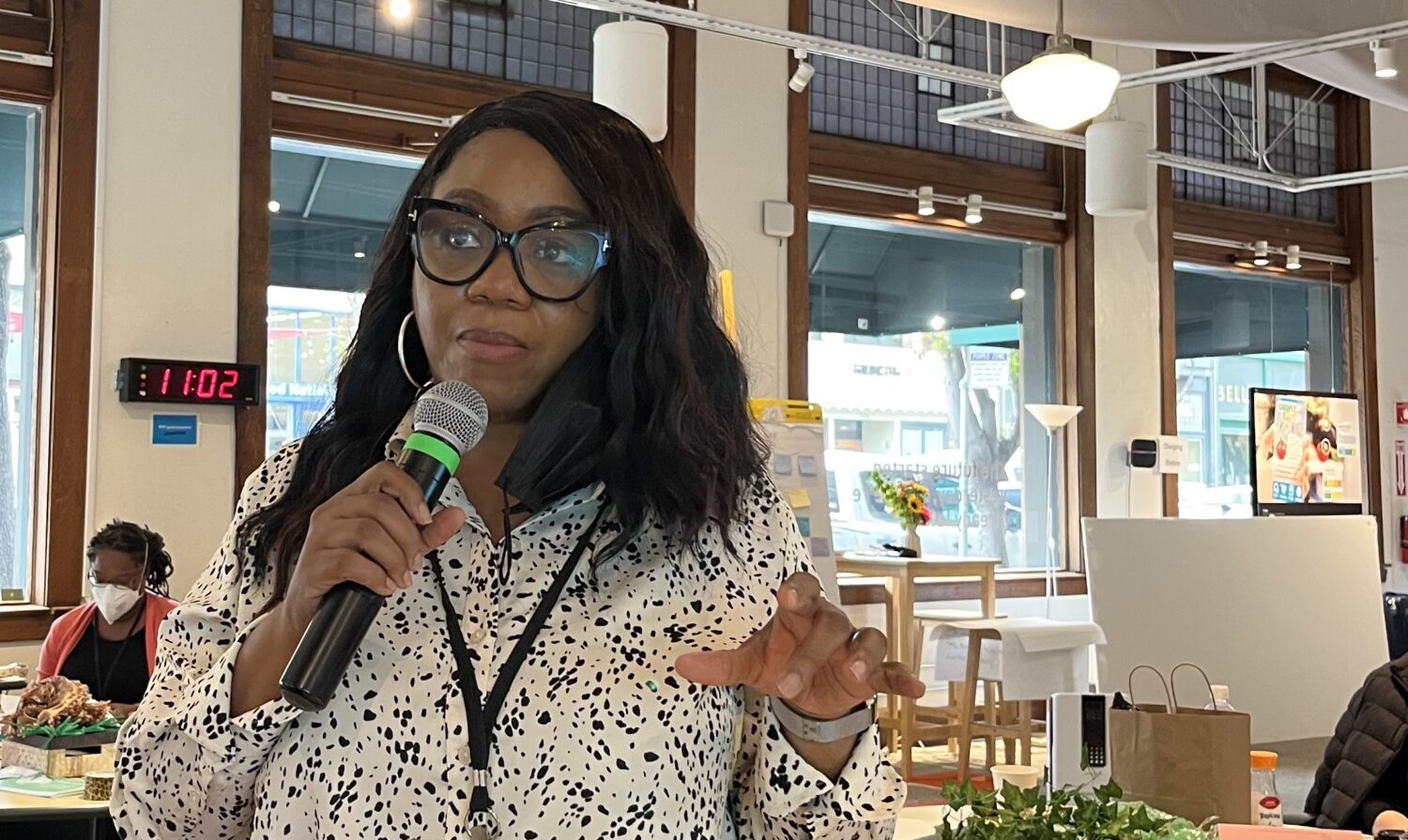What is it like to design future experiences with strangers? After spending two full days with a cohort of 17 people at Institute for the Future, I found out. Participants in IFTF Design Futures, held out at our headquarters in Palo Alto, California, included philanthropic leaders, corporate R&D folks, education innovators, labor researchers, urban planners, a children's museum leader, a health equity expert, a religious clergy, nonprofit co-founders, and others. The person who traveled the greatest distance to join us is involved with IndigiCon, Australia’s Indigenous Comic Con.

IFTF Design Futures founder and facilitator Dr. Jake Dunagan leads a room of participants at the Institute in Palo Alto.
Image by Rachel HatchKathi Vian, our dear IFTF colleague and Distinguished Fellow, once said: “juxtaposition is a research methodology.” This convening proved her right! Diverse roles and perspectives in the room contributed to a richer, more complete vision for the future.
When it comes to foresight, “the who” (those participating in the process) matters.
Our framing question for the time together was: “What IF there were 1 billion climate migrants in the world in 2032?” How would we design for that future? How could futures thinking skills equip us to have a conversation about climate migration at local, regional, national, and global levels?


The IFTF Design Futures Training—in addition to the IFTF Foresight Essentials training—has been employing the theme of climate migration as an anchor topic for the curriculum.
Image by Rachel HatchCat’s Cradle: A Tool for Balancing Forces Shaping the Future
Though I have been a foresight practitioner since 2008, the training gave me my first chance to use the Cat’s Cradle tool, developed in 2019 by my IFTF colleagues Jacques Barcia, Ilana Lipsett, and Jake Dunagan as a variation of Sohail Inayatullah’s Futures Triangle.
As the training facilitators Jacques, Ilana, and Jake pointed out, Cat’s Cradle is a game of creating shapes by weaving string around your fingers. The future is a tapestry weaving together strong, subtle, and noisy forces in any dynamic system — the trends, visions, structures, habits, strategic choices, and conditions that influence change and stability. Using the Cat’s Cradle as a visual metaphor helps represent these forces and their mutual interdependencies.
Like the strings of a Cat’s Cradle, we design experiences within a dynamic tension: informed by the weight of the past, constrained by the push of the present, and propelled by the pull of the future.

What I find most interesting is that if it weren’t for “the who” present in the room, we might have missed out on the diverse perspectives in the room that led to the following insights:
The Push of the Present: In a future of climate migration, we will need to design everything that is currently place-based to be instead portable. This will shape what architects and designers need to learn in schools, how municipalities will fund infrastructure projects, and even how we might think of education and social services as portable infrastructure.
The Pull of the Future: In a future of climate migration, tracking movement will become of great importance at a global scale. We will need to design new forms of digital identity, and tracking migratory movement will become an even more ethically complicated question than it is today.
The Weight of the Past: In a future of climate migration, we will need to design legal systems with the power dynamics of racism in mind. We will need to design reparative processes to engage with our histories of displacement of indigenous people and enslavement as part of global colonialism. And we will need to design new narratives around who is “allowed to be a refugee.”
In 2017, I learned about climate migration from my colleague, Sara Skvirsky, in her Ten-Year Forecast piece, Perilous Planet: Designing for Impermanence. Since then, I’ve learned more about climate migration, but always in a solitary way. The social process of co-learning together made a big difference. The people in the room at Design Futures – who started as complete strangers — helped deepen my understanding and cast a more holistic view. I am grateful for the opportunity to witness my colleagues in action, and for all the participants who shared their visions for the future we need to design together.

Want to receive free tips, tools, and advice for your foresight practice from the world's leading futures organization? Subscribe to the IFTF Foresight Essentials newsletter to get monthly updates delivered straight to your inbox.
Ready to become a professional futurist? Learn future-ready skills by enrolling in an IFTF Foresight Essentials training based on 50+ years of time-tested and proven foresight tools and methods today. Learn more ».